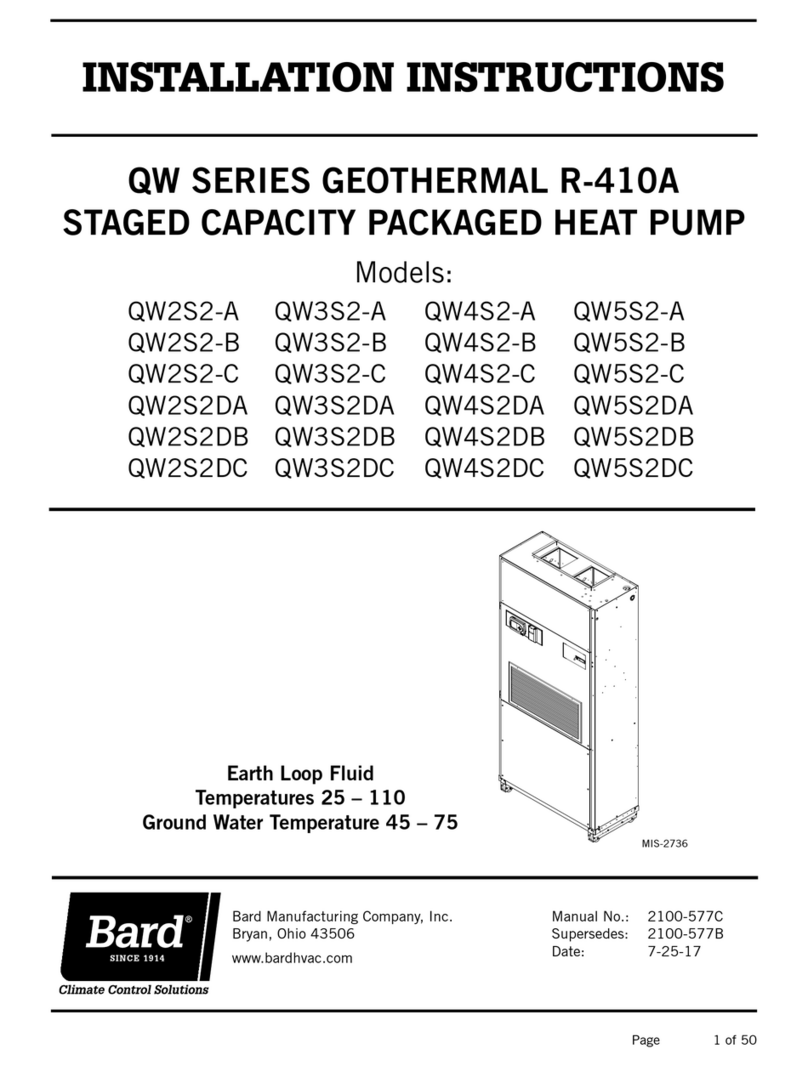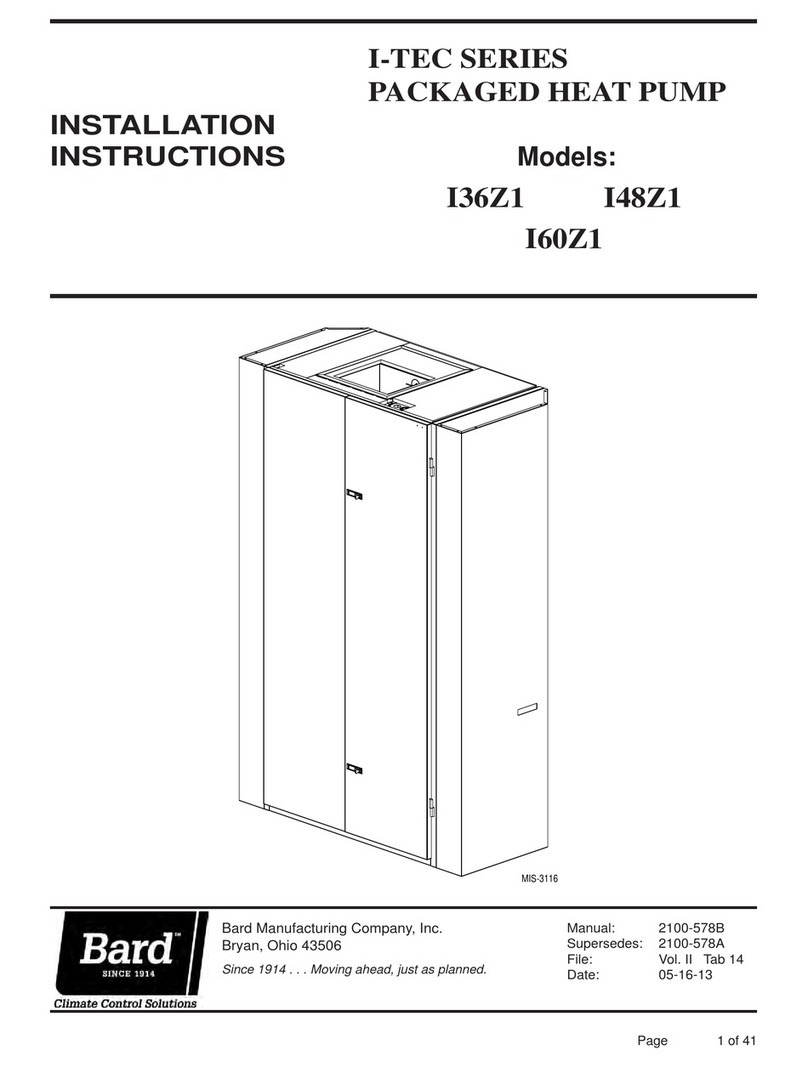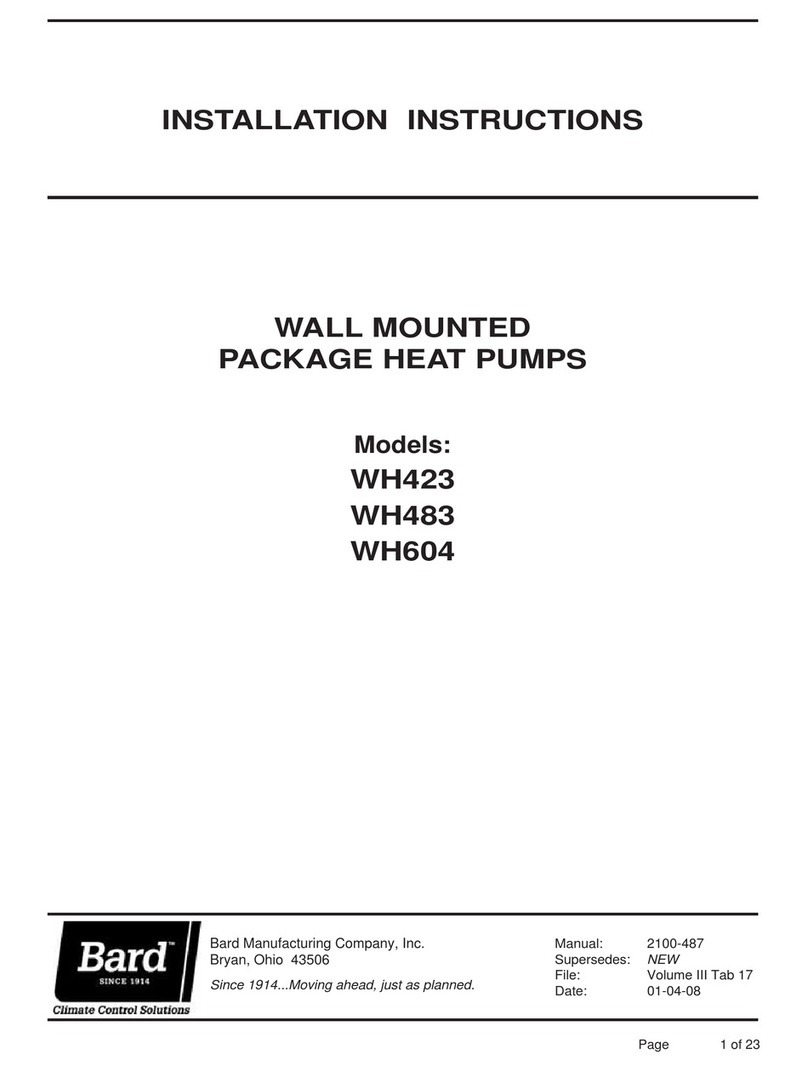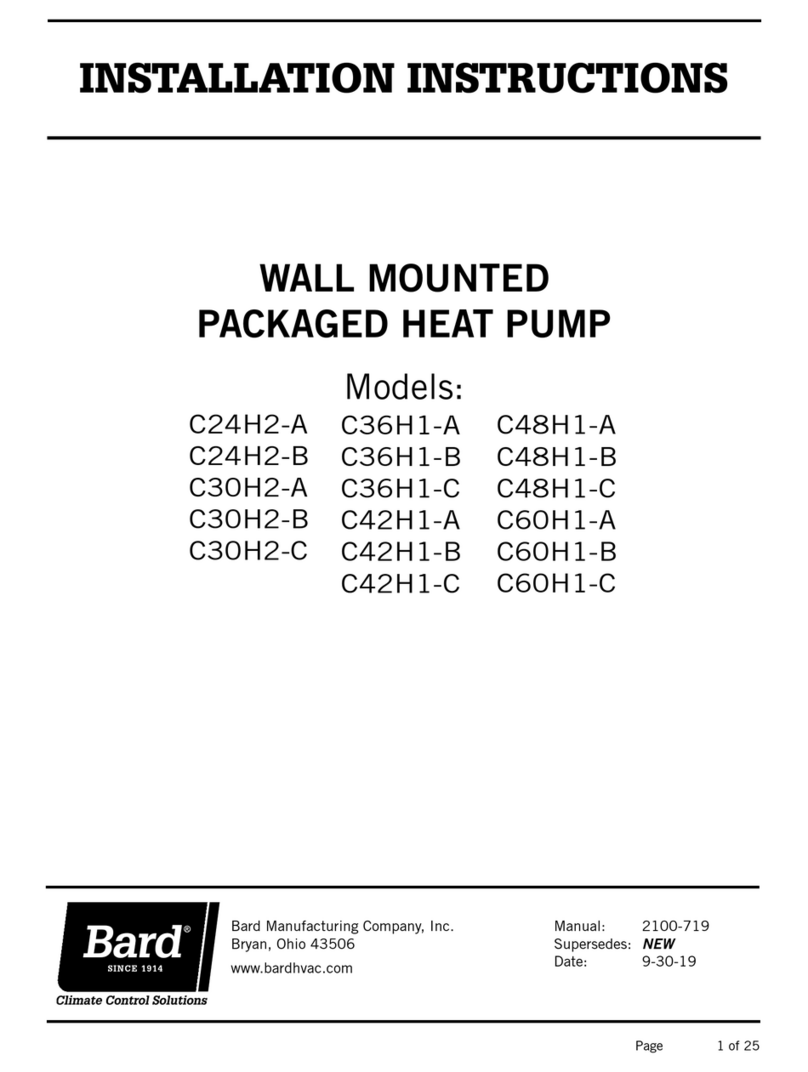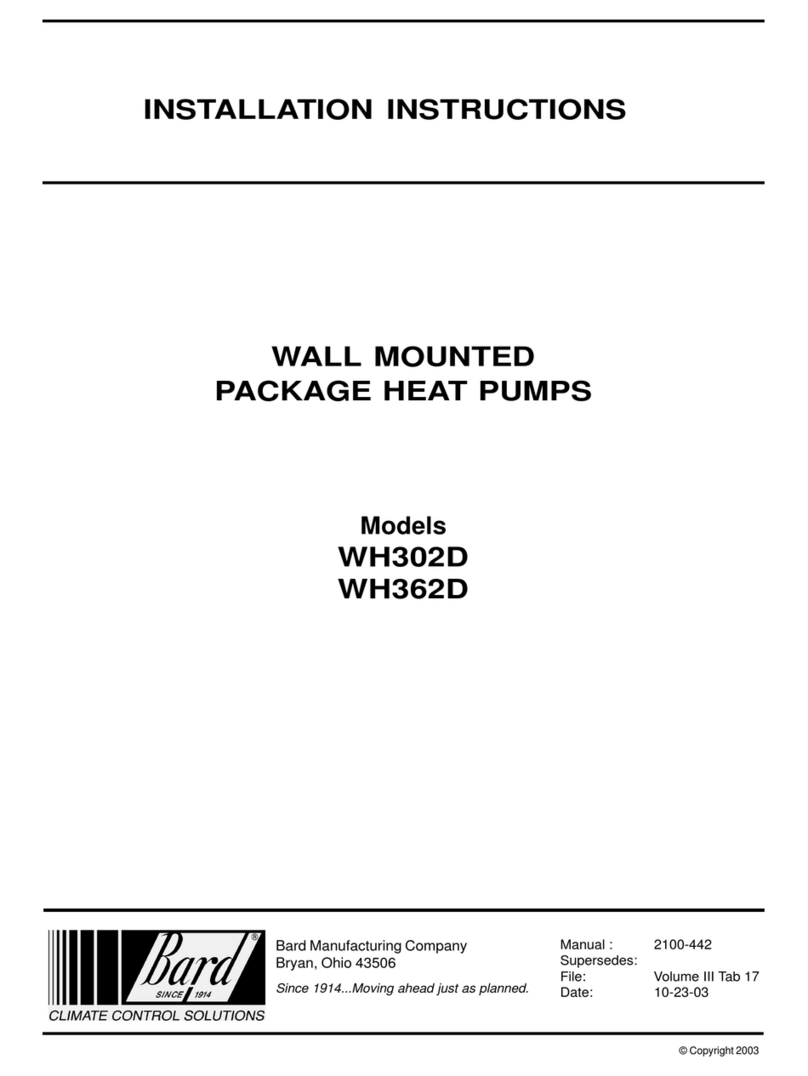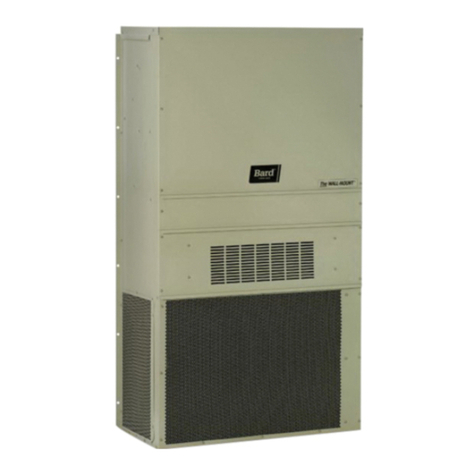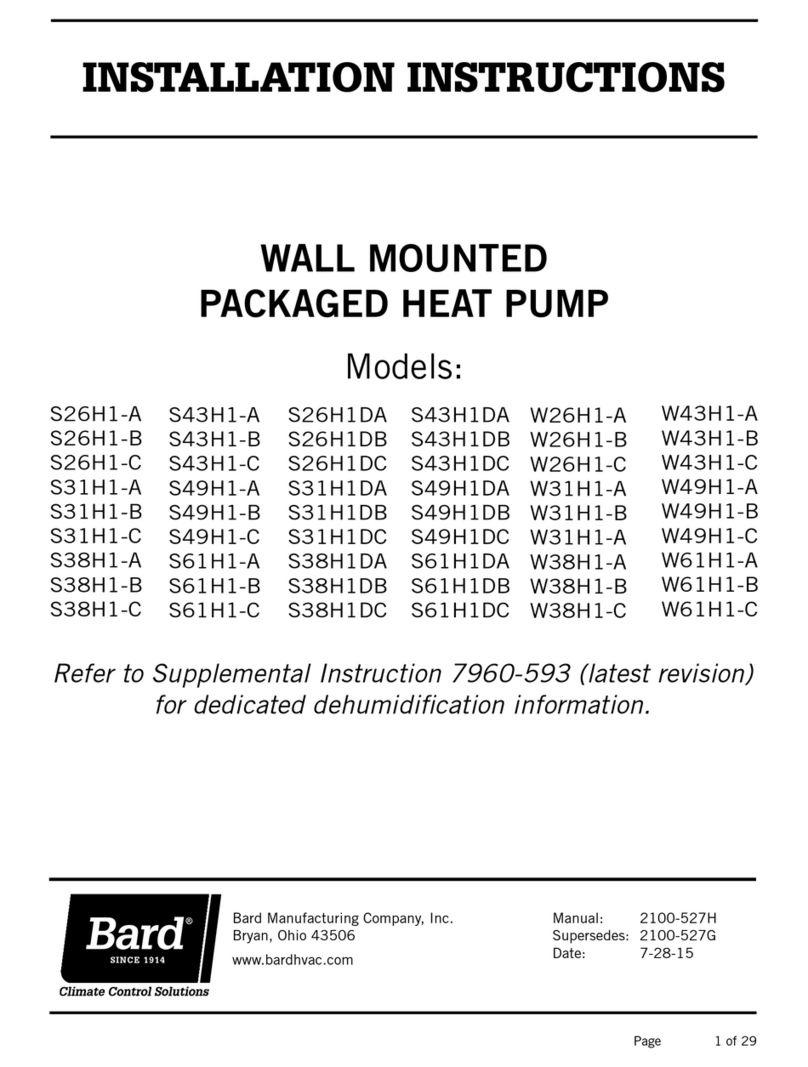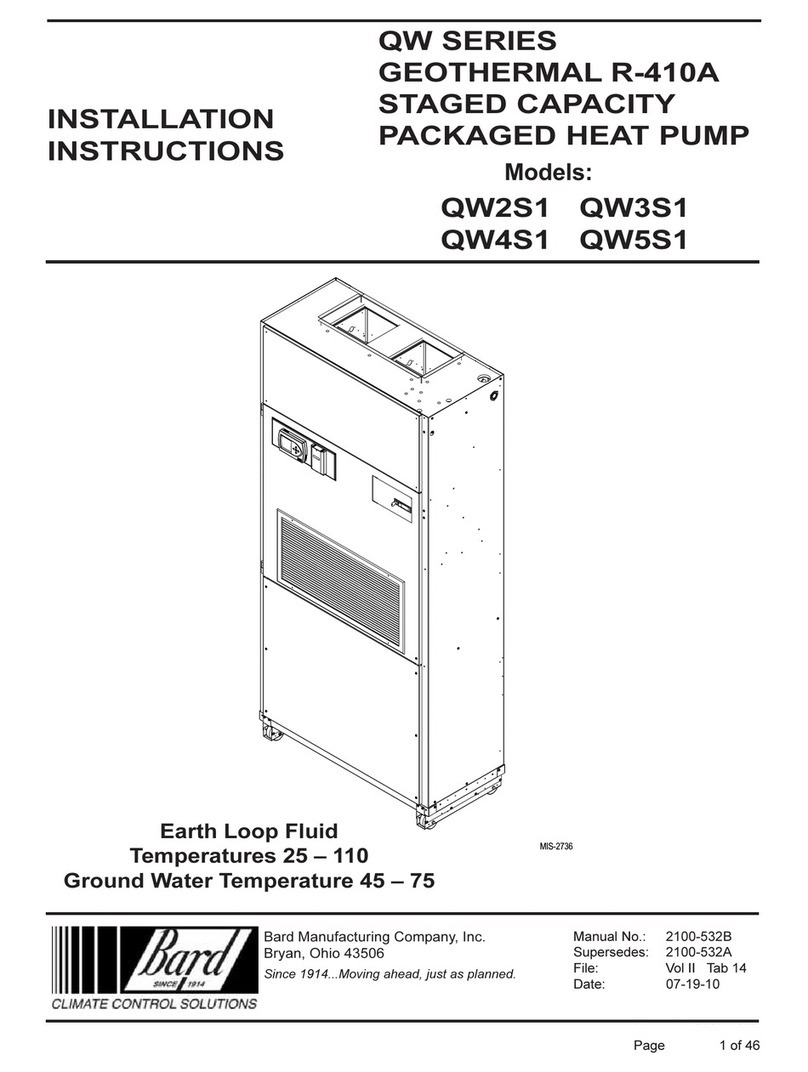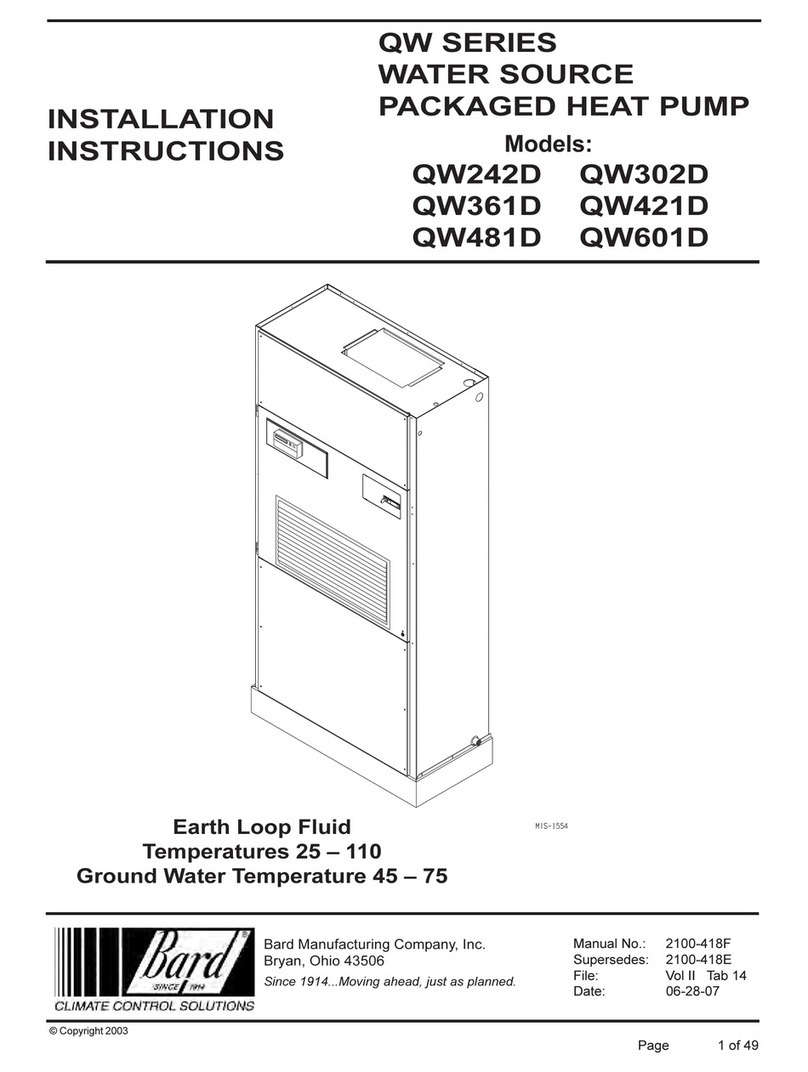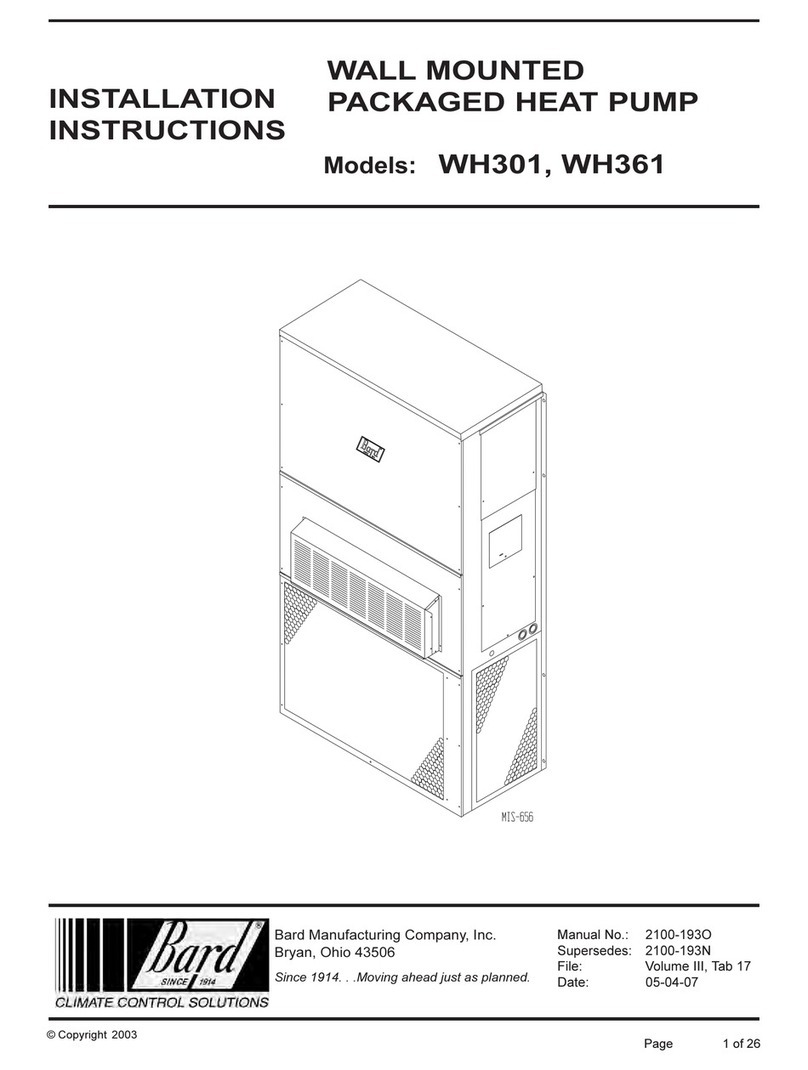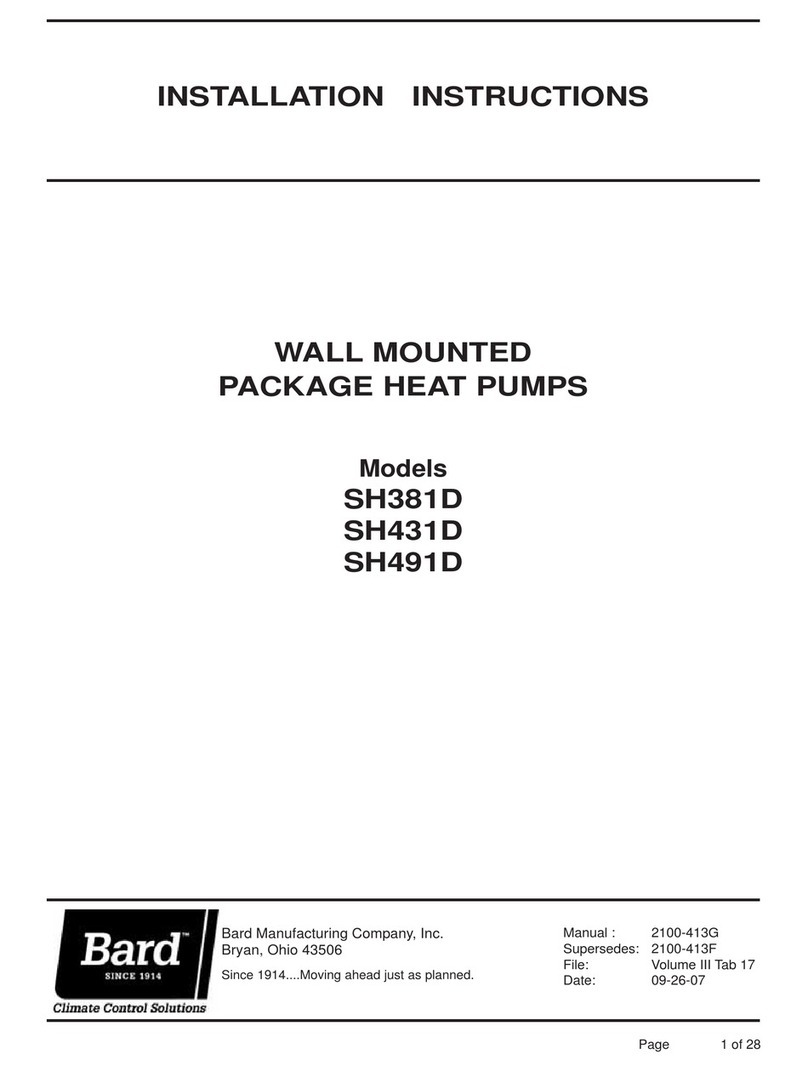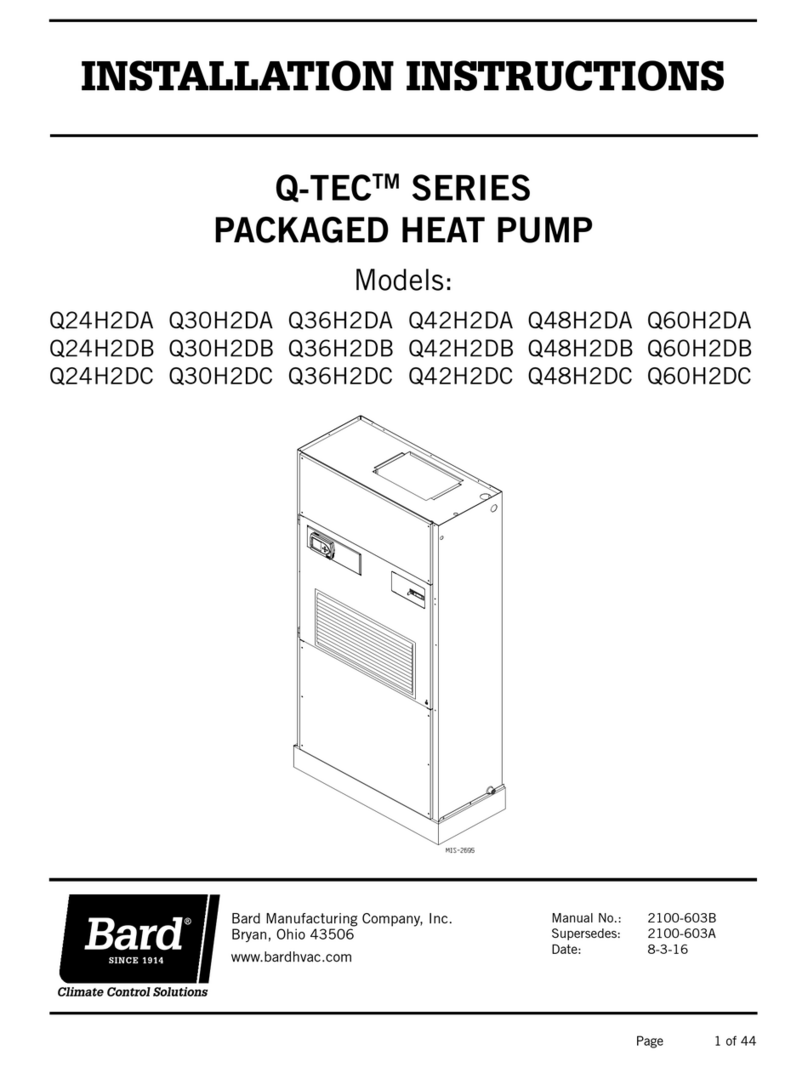
Manual 2100-419E
Page 7 of 48
SHIPPING DAMAGE
Upon receipt of equipment, the carton should be
checked for external signs of shipping damage. The
skid must remain attached to the unit until the unit is
ready for installation. If damage is found, the receiving
party must contact the last carrier immediately,
preferably in writing, requesting inspection by the
carrier’s agent.
It is recommended that the unit not be removed from the
skid with a fork lift.
The shipping brackets on each side of the unit must be
removed and discarded. See Figure 2-A on Page 7. The
return air grille panel can be removed to provide a place
to hold the unit. The unit can be slid forward on the skid
until the front wheels hang over the edge of the skid.
See Figure 2-B. The unit can be tipped forward and slid
down the edge of the skid until the front wheels touch
the ground. See Figure 2-C. The wheels will not roll.
They are shipped from the factory locked so they will
not roll. The back of the skid will have to be held down
to keep it from tipping up. The skid can be slid out from
under the unit. The unit can then be set upright.
FIGURE 2
REMOVAL OF UNIT FROM SKID
HOLD SKID DOWN
ASHIPPING BRACKETS BFRONT WHEELS OVER EDGE CFRONT WHEELS ON FLOOR
MIS-1603
The unit will have to be turned sideways and removed
from the skid to fit through a 36" doorway. If the door
height allows, the unit can be slid sideways through the
door.
If the unit can not be slid through the door, then the unit
will have to be put on a cart and tipped down to roll
through the door. It is recommended that an appliance
cart by used with a strap to hold the unit on the cart.
The wheels of the unit must be locked. If the wheels
were allowed to roll, the unit could roll off the cart. The
unit should always be carted from the left side. This is
the side where the compressor is located. See Figure 3.
The blade of the appliance cart should be slid under the
wheels of the unit. The strap of the appliance cart
should be placed around the unit and strapped tightly.
Help will be required to tip the unit back onto the cart.
The unit can be leaned far enough back to be rolled
through the door. Be careful when setting the unit back
up to keep from damaging the unit.
UNIT REMOVAL FROM SKID
HANDLING UNIT AFTER REMOVAL FROM
SKID
WARNING
Exercise extreme caution when pushing the
unit on the rollers. Handle and push from the
lower 1/3 of the unit. Insure that debris is not
on the floor where the unit is to be moved on
the rollers. Failure to do so could result in
the unit tipping over and causing bodily injury
and/or damage to the unit.
WARNING
This unit is heavy and requires more than one
person to handle and remove from the skid.
Check unit wheels to ensure that wheels are
locked before removing from skid. Extreme
caution must be taken to prevent injury to
personnel and damage to the unit.




















